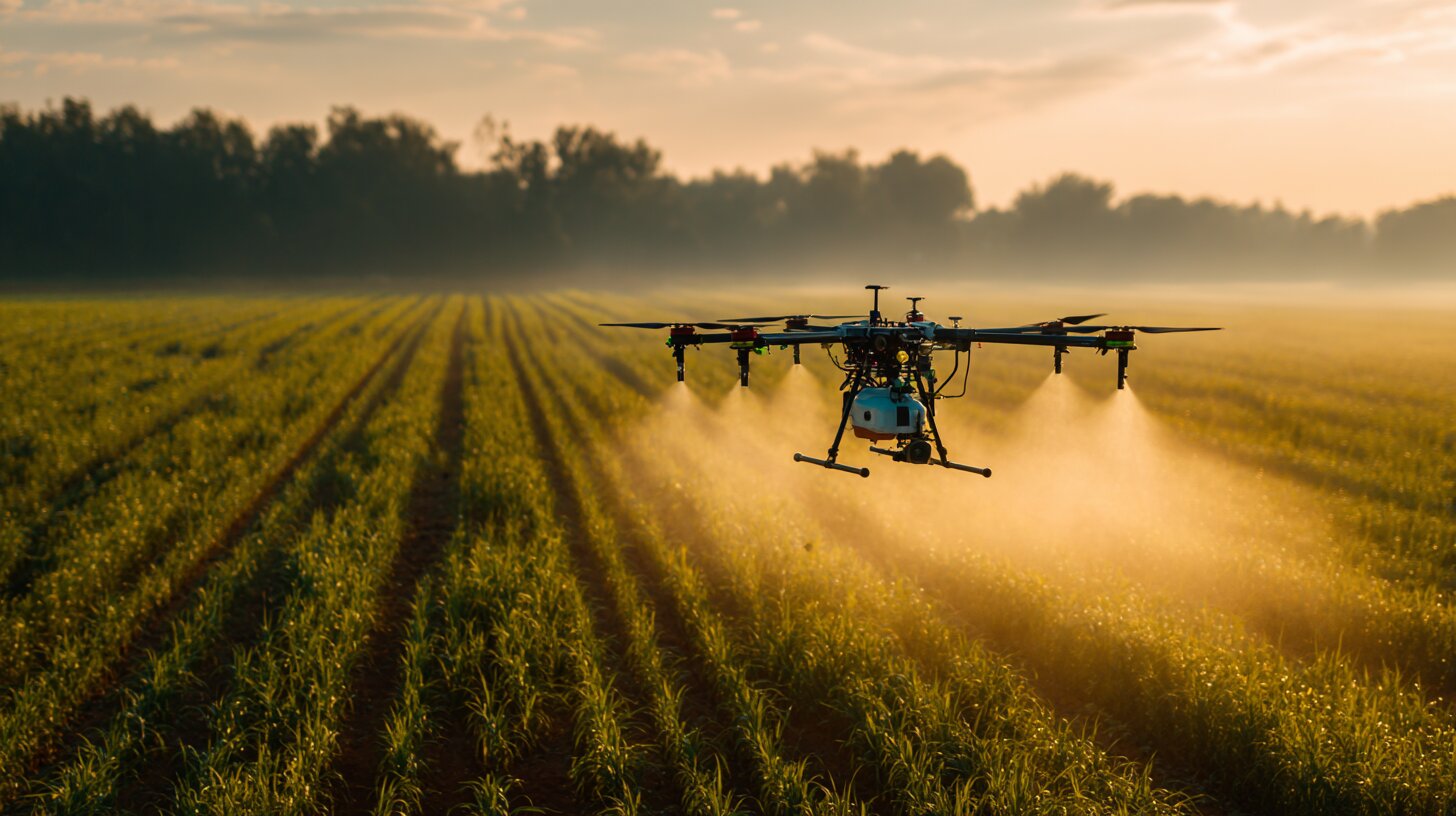Drones have become indispensable tools in modern agriculture, revolutionizing traditional practices through precision, efficiency, and data-driven decision-making. By enabling farmers to monitor crops, manage resources, and optimize yields with unprecedented accuracy, drone technology addresses critical challenges such as labor shortages, environmental sustainability, and rising operational costs.
Precision Farming and Data Collection
Drones equipped with multispectral sensors, thermal cameras, and GPS generate high-resolution maps and real-time data on soil health, moisture levels, and crop conditions123. This allows farmers to:
- Target irrigation and fertilization precisely, reducing water and chemical usage by up to 30%34.
- Identify nutrient deficiencies and disease outbreaks early, minimizing crop loss56.
- Create 3D topographic maps to optimize planting patterns and drainage systems73.
Crop Monitoring and Health Assessment
Aerial imaging provides a bird’s-eye view of fields, revealing issues invisible at ground level:
- Multispectral imaging detects plant stress caused by pests, diseases, or water scarcity135.
- Thermal sensors identify irrigation inefficiencies and microclimate variations73.
- Regular surveys enable farmers to track growth stages and predict yields with 85–90% accuracy14.
Planting and Seeding Innovations
Drones are redefining planting methods, particularly in challenging terrains:
- Air cannon systems plant seeds directly into soil at rates 10x faster than manual methods13.
- Used in reforestation projects and cover crop seeding, drones improve germination rates while reducing labor costs83.
Pest Control and Targeted Spraying
Equipped with spray systems, drones apply pesticides or fertilizers with millimeter precision:
- AI-driven targeting reduces chemical runoff by 50% compared to traditional blanket spraying54.
- Swarm drone fleets can treat 21 hectares per hour, adapting spray volumes to specific crop needs73.
Livestock Management
Beyond crops, drones enhance animal husbandry through:
- Thermal imaging to monitor herd health and locate stray animals39.
- Grazing pattern analysis to optimize pasture rotation and reduce overgrazing13.
Sustainability and Resource Efficiency
By minimizing waste and chemical use, drones promote eco-friendly practices:
- Water conservation: Drones reduce irrigation waste by 25% through moisture-level mapping34.
- Carbon footprint reduction: Precision spraying cuts fuel consumption from traditional machinery710.
Future Outlook
The agricultural drone market is projected to grow from $1.2 billion to $4.8 billion by 20254. Advances in AI, swarm technology, and 5G connectivity will further enhance capabilities, enabling fully autonomous farm management systems16. As climate challenges intensify, drones will play a pivotal role in achieving global food security while preserving natural resources.
From soil analysis to yield forecasting, drones are not just tools but partners in building a sustainable agricultural future. Their ability to merge aerial agility with cutting-edge analytics ensures farmers can meet rising demands without compromising environmental integrity.
